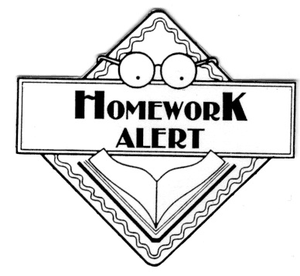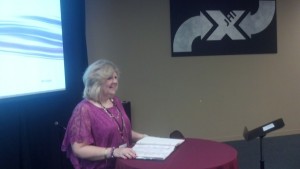by Donna | Aug 11, 2014

Once school starts and the textbooks have been previewed, you can help your students get into good study habits by doing their assignments with them for a few weeks as needed.
Here are some tips along those lines:
(more…)
by Donna | Aug 8, 2014

“The object of education is to prepare the young to educate themselves throughout their lives.” Robert M Hutchins
It’s that time of year again, so I want to re-run a three part article about textbook previewing with your kids to help them start out well with this fall’s school success.
Before I do though, I want to remind you to LIKE our Character Ink FB page, and sign up to receive our blog posts in your email and to receive our enewsletter (in the sidebar) which includes links to articles for the week and much more!
Oh, and don’t forget to spread the word! Many of our Raising Kids With Character seminar/blog followers are not aware of our homeschool pages and updates.
(more…)

by Donna | Sep 12, 2013
 |
| image clker.com |
Once school starts and the textbooks have been previewed, you can help your students get into good homework habits by doing their homework with them for a few weeks.
Here are some tips along those lines:
1. Taking the textbook preview further
There are a number of ways that you can take the previewing of textbooks that I discussed yesterday even further with your children for more comprehension of the material:
a. Do his first few assignments out of the book with him, pointing out the things again that you observed in your first preview. This will help him see that those things are not just good things to know, but also helpful for completely homework quicker and more accurately.
b. Help him prepare for his first test with his textbook and you by his side. Show him how he can use the glossary, sidebars, table of contents, etc. to quickly fill in his study guide or quickly determine what the most important aspects of the chapter are in order to prepare for a test.
c. As you are previewing a text (for the first time or an additional time), use a large sticky note to record what you find. Write the title of the text at the top, then make notes about what it contains as far as study and homework helps. Stick this in the front of his textbook and help him refer to it when he is doing homework or test preparation. You could even record a plus and minus system, such as
+++ means something is going to be really helpful—a +++ beside the Table of Contents, for instance
+ beside a word he writes in the front of his book tells him that this might be somewhat helpful—Example: +Some graphs
– No study questions at end of chapter—again, he can make a list in the front of his book (on a large sticky note), etc.
d. Help him “label” different sections of his book with sticky notes along the edges. For example, you could put a yellow one at the beginning of each chapter and a pink one on the page that has definitions for that chapter, etc.
2. Prepare your younger student for textbooks by using user-friendly non-fiction books
Maybe you are not in the textbook stage with your kids; however, you can begin preparing them for those all important study skills that I described yesterday with quality non-fiction books. If kids at ages five, six, eight, and ten, learn to navigate around Dorling Kindersley, Eyewitness, and Usborne books (among many others), they will be heads and shoulders above other children who have only been exposed to fictional stories (more on the benefits of fiction later!).
These outstanding non-fiction books have literally hundreds of topics that interest kids, but they are so colorful and alluring, you do not feel like you are “teaching” at all. Additionally, they have many aspects that your child’s future textbooks will also have: glossaries, Tables of Contents, sidebars, graphs, pictures, inserts, definitions, bold font, italics, etc. Reading these to and with your children when they are younger will provide a natural step into textbooks later on.
Note: We teach our students (in our home, our cottage classes, and in our language arts books) a simple memory device for remembering fiction and non-fiction:
Fiction=fake (both begin with f)
Non-fiction=not fake (both begin with nf)

by Donna | Sep 10, 2013
 |
| Speaking about “Building Study Skills and Comprehension” at a conference |
There are many aspects of teaching a child how to learn, one of which is working to increase our children’s comprehension. When people have good comprehension, they can learn anything, anywhere, anytime.
There are three primary ways that we have worked to increase our children’s comprehension: (1) Discussion with parents and those more knowledgeable than the child; (2) Good questions following reading or discussions; and (3) Provide a rich background of experience.
The first two of those go hand-in-hand. Discussion of everything with our children from very young ages has given our kids experiences in areas that they would normally not have experiences in. It gives us the opportunity to teach all the time—and gives them learning hooks that they create with the discussion material to bring into other learning situations.
Good questions, not just rote questions, help the student think more deeply about subjects and allow you to observe his thought processes and help them along. Lastly, a rich background of experience gives your student the edge in learning any subject. Like discussion, it gives a child more knowledge, more background, more information to bring into future learning scenarios.
I am adding some information about teaching children how to learn, good materials, links to articles, etc., in the sidebar of this article for those who would like to study this further. Just being aware of always teaching our kids how to learn, how to study, how to research, how to further their understanding is a big step in teaching kids how to learn.
SIDEBAR….
Tips and Links for Teaching Children How to Learn
~People often ask us what we would have done differently in our homeschool. One of the things I would have done differently is that every child, every year would have done a thinking skills book of some sort from the Critical Thinking Company: https://www.criticalthinking.com/index.jsp?code=c








